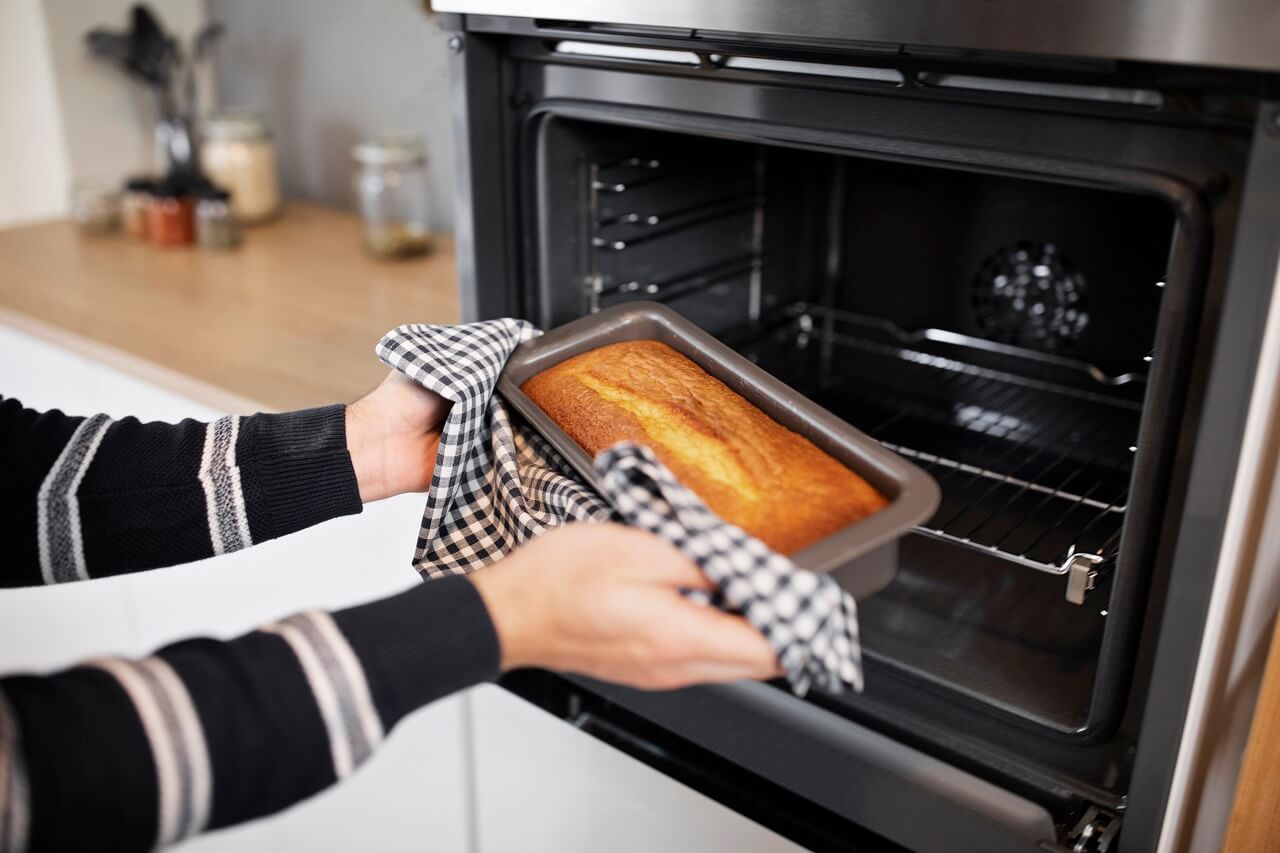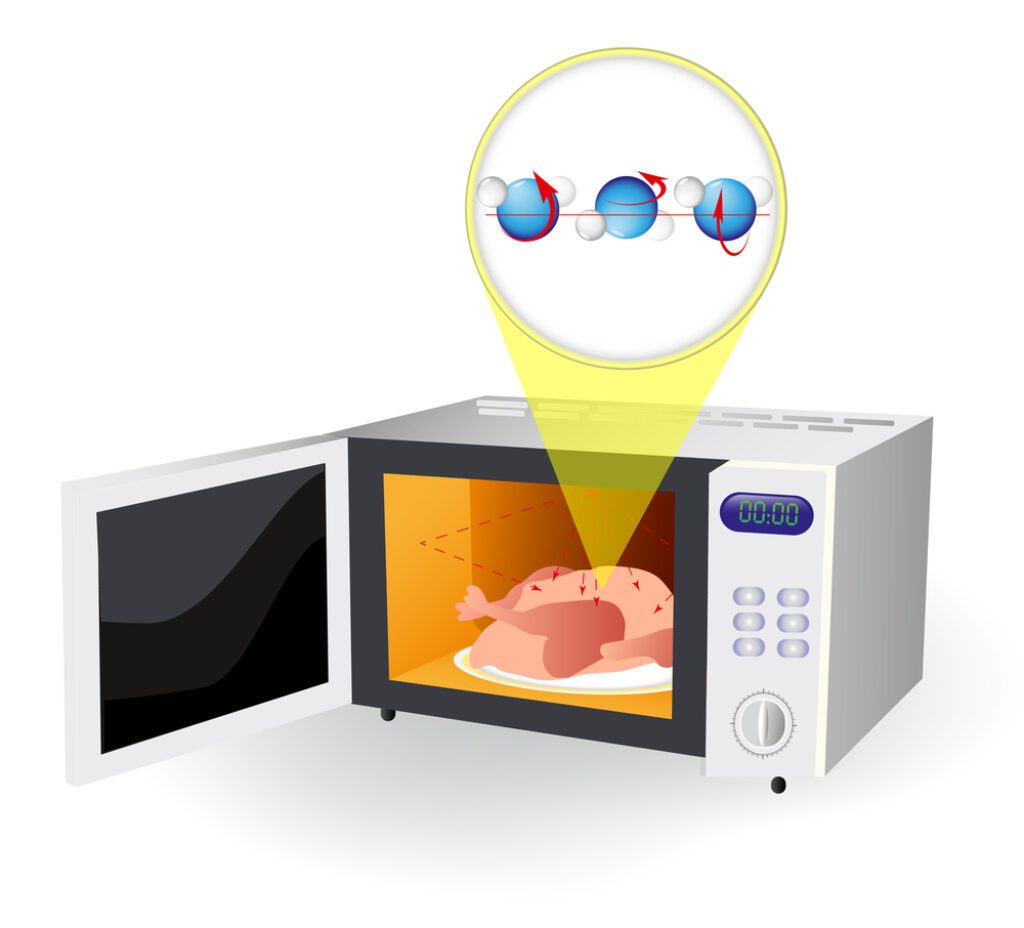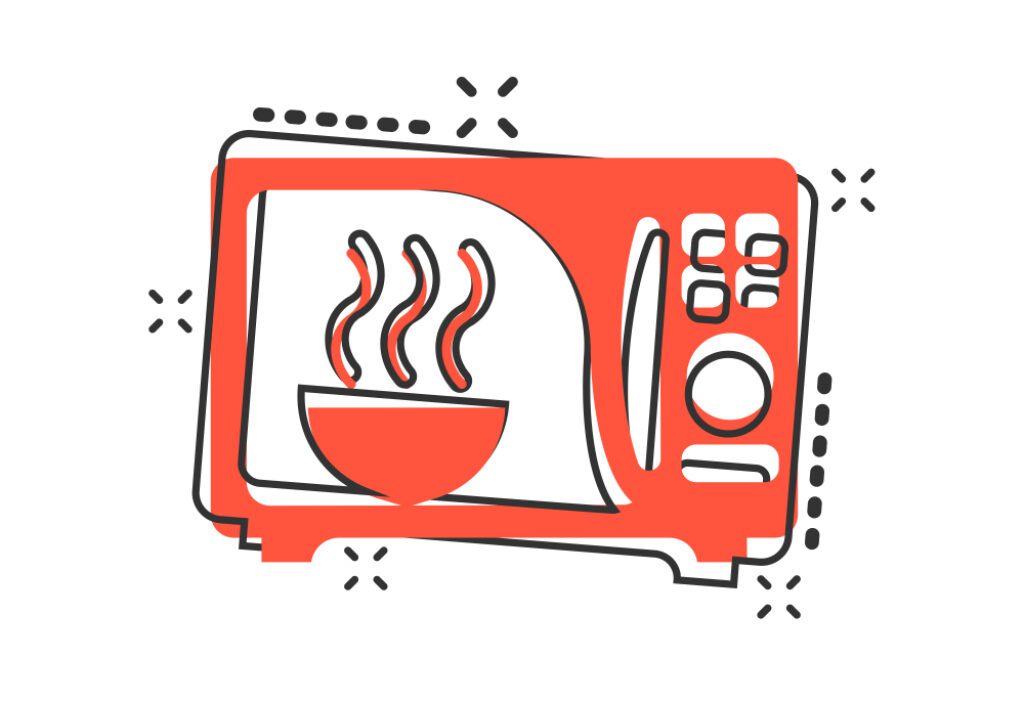


Microwave stoves are now an important part of every home. They make our lives more convenient and efficient. But many people are still curious about “How Hot Does a Microwave Get” and if they can burn you.
In this blog post, we will look into the depths of microwave heat, examining the maximum temperature they can achieve, their common uses and safety precautions.
How Does a Microwave Work?
Have you ever been curious about how a microwave works? Let’s talk about the science behind this modern kitchen appliance.
A microwave oven uses electromagnetic radiation in the form of microwaves to generate heat. These microwaves come from a part called a magnetron. This magnetron is what sends out these electromagnetic waves.
When you put food in the microwave and set the time you want it to cook, the magnetron turns on and makes microwaves. The frequency of these microwaves is usually around 2.45 gigahertz, which lets them interact with the water molecules in the food.
Dipolarity is a unique feature of water molecules, which means that their positive and negative charges are not spread out evenly. When microwaves hit these water molecules, they create an alternating electric field that makes the molecules move quickly.
This fast movement of the water molecules creates friction, which heats the water. Because the microwaves heat up the water droplets inside the food, the temperature of the food goes up.
But why does the food heat up while the microwave itself remains relatively cool?
The reason has to do with the materials used to build the oven. The microwave oven has metal walls on the inside, which reflect the microwaves instead of soaking them. This reflection keeps the microwaves inside the oven, where they can interact with the food instead of escaping into the surroundings.
As the microwaves bounce off the metal walls, they heat the food evenly. But it’s important to remember that the heat may not always be spread evenly, so there may be hotter and cooler spots in the food. To make up for this, it’s best to stir or turn the food while it’s cooking to make sure it heats evenly.
What temperature can a microwave reach?
A microwave’s wattage determines the highest temperature it can attain. The more watts a microwave has, the more energy it can make, which makes food hotter.
For example, a microwave with a wattage of 1000 watts will usually heat food faster than one with a wattage of 500 watts.
Still, the power is not the only thing that affects the highest temperature. The result is also affected by the type of food that is being heated.
Soups and stews, which have a lot of water, tend to soak up more heat and get hotter than grains and crackers, which have less water.
The length of time something is heated also affects the end temperature. When you cook something for longer, you use more energy, which makes the temperature rise.
So, How Hot Does a Microwave Get? It varies based on several factors, including wattage, food composition, and heating duration. Generally, higher wattages, greater water content in the food, and longer heating times result in hotter temperatures.
What is the Highest Temperature a Microwave Can Reach?



Most home microwaves can only get as hot as the boiling point of water, which is around 100 degrees Celsius or 212 degrees Fahrenheit. However, there are some types that can get even hotter.
Most microwaves in homes have a power level of about 700 watts, which is equal to a maximum temperature of about 100 degrees Celsius. However, microwaves designed for commercial use can have wattages as high as 3,000 watts or higher. The highest temperature that these strong microwaves can reach is 250 degrees Celsius, or 482 degrees Fahrenheit.
It’s important to note that these higher temperatures are generally reached by using extra cooking functions like grill or convection modes, which use different heating elements and methods than the standard microwave heating method.
Microwave Temperature Chart
| Power Level | Temperature Range |
|---|---|
| Low | 150°F (65°C) to 200°F (93°C) |
| Medium-Low | 225°F (107°C) to 275°F (135°C) |
| Medium | 300°F (149°C) to 350°F (177°C) |
| Medium-High | 375°F (191°C) to 425°F (218°C) |
| High | 450°F (232°C) to 500°F (260°C) |
Please note that these temperature ranges are approximate and can vary based on the specific microwave model and the amount of time the food is cooked.
What Happens When Microwave is Too Hot



When a microwave is used, the microwave itself does not usually get hot. But high power and long use can cause the sensitive parts inside, like the magnetron (which makes the microwaves) and other electrical parts, to get too hot.
A microwave has a switch that turns it off when it gets too hot to stop any more damage. When this happens, it’s important to unplug the microwave and leave the door open to let air flow through. This makes it possible for the microwave to cool down faster.
Once the microwave is cool, you can plug it back in and try to start it up again. But if the problem keeps happening and the microwave won’t turn back on, you should wait 15 to 20 minutes before trying to turn it back on again. If the microwave keeps shutting off or won’t turn back on, you should call a professional or the maker for help.
How Can You Prevent Your Microwave From Getting Too Hot?
Even though microwave ovens are made to make heat to cook and warm food, it’s important to keep them from getting too hot to make sure Microwave work safely and last longer. Here are some important things you need to know to keep your microwave from getting too hot:
- Don’t overcook food: Don’t let the food get too hot by cooking it for too long or with too much power. Not only can overheating make it too hot, but it can also dry out or even burn food. Change the power level and cooking time to get the results you want without burning.
- Use microwave-safe dishes: Make sure you use plates and containers that can handle the heat from a microwave. Most of the time, these plates are made of microwave-safe glass, ceramic, or plastic. Don’t use metal containers or other containers that aren’t safe for the microwave because they can cause sparks or even damage the machine.
- Cover food properly: When heating or preparing food in the microwave, use a microwave-safe lid or wrap it with holes. This helps keep the water in and keeps the food from splattering, which can cause hot spots and uneven cooking. It also makes it less likely that there will be too much steam and start a fire.
- Stir and turn the food: To avoid hot spots and make sure the food is heated evenly, stir it halfway through cooking and, if you can, turn the dish. This helps the heat get to more places and makes it less likely that some spots will get too hot.
- Keep track of cooking times and food temperature: If the food gets too hot or starts to steam too much, turn off the microwave for a moment and change the cooking time or power level. It’s best to be safe and make sure things don’t get too hot.
- Clean the microwave: You should clean your microwave often so that food bits and spills don’t build up and cause hot spots or make it work less well. Follow the cleaning and maintenance instructions given by the maker or use Angry Mama Microwave Cleaner. This means getting rid of any grease or other leftovers that could make the machine get too hot.
Safety Considerations for Microwave
Using microwaves safely is the most important thing to do to avoid crashes or other dangers. It is important to use products that are labelled as safe for the microwave. Metal dishes or tools should never be put in a microwave because they can cause sparks and damage the machine. Also, some foods or drinks can be dangerous if they are heated too much. The best way to use a microwave is to follow the safety rules and be careful:
1. Use microwave-safe containers: Make sure the pots, plates, and wraps you use in the microwave say on the label that they can be used in the microwave. This makes sure that they can stand up to the heat from microwaves without melting or letting out dangerous chemicals. Metal, aluminium foil, and plastics that can’t be used in the microwave shouldn’t be used because they can cause sparks or fires.
2. Don’t Overheat Liquids: Microwaved liquids can become superheated and reach temperatures over their boiling point without popping. This can cause the water to boil quickly and violently if the pot is moved, which could cause burns. To avoid this, stir liquids after heating them and use containers that can go in the microwave and have handles so you don’t have to touch hot liquids directly.
3. Open Containers Carefully: Microwaved containers may be hot. Use oven mitts or towels to handle hot objects, and open lids or covers away from your face to avoid steam burns.
4. Good Ventilation: Make sure your microwave has good ventilation and that nothing is blocking the vents. This lets heat escape and keeps wetness or steam from building up, which could damage the microwave or make it work less well.
5. Avoid Overheating or Overcooking: To avoid overheating or overcooking, use the recommended cooking times and power settings for each food. If food gets too hot, it can dry out or burn, which could start a fire or damage the microwave.
6. Never Use an Empty Microwave: Running a microwave without food or drink will damage it. Microwaves are made to heat food, and they need something to use the energy they give off. If you turn on an empty microwave and let the microwaves bounce back onto the magnetron, it could overheat and stop working.
7. Regular Cleaning and Maintenance: Clean up spills and food debris in your microwave. Check and clean the door seals often to make sure they are still in good shape and working well. Follow the maintenance and service directions from the manufacturer to keep your microwave in good shape.
8. Child Safety: If you have young children, make sure they are safe around the microwave by taking steps. Keep the microwave out of their reach and talk to them about how dangerous it could be for them to use it on their own.
9. Follow the Manufacturer’s Instructions: Always look at the manufacturer’s instructions and guidelines for your individual microwave model. This includes information about how much power your appliance needs, how long you should cook for, and any safety tips that are specific to your appliance.
By keeping these safety tips in mind, you can use your microwave with confidence and cut down on the chance of damage or injury. By putting safety first, you can enjoy the ease and speed of microwave food without putting your health or the safety of those around you at risk.
Conclusion
People use microwaves to heat up food because it’s easy and quick. But sometimes they wonder how hot they get. I’ve taken the time to do some study and give you an in-depth explanation of microwave oven temperatures.
Now that you know more about microwaves, you can use this knowledge to help you choose the right model for your needs or decide if it’s time to upgrade your current one.
FAQs
How hot does 1000 watt microwave get?
A microwave with 1000 watts of power works well when the temperature inside it is 575 degrees. This temperature is enough to bring water to a boil, heat up soup, and cook leftover meals. The amount of heat a microwave makes varies on how long it is used. Microwaves make different amounts of heat depending on how long they are used.
How hot does a microwave get in 1 minute?
A microwave can attain temperatures ranging from 100°F to over 200°F in just one minute, depending on the wattage output of the exact model.
How hot can a microwave get in Fahrenheit?
Under typical conditions, the highest effective temperature of food or liquid heated in a microwave oven is 212 degrees Fahrenheit.
How long does it take to boil water in the microwave?
When heating water in the microwave, it is critical to keep it at boiling point for at least two minutes. This guarantees that the water is thoroughly heated and properly boiled.
Does microwave get as hot as oven?
By considering its wattage, the temperature inside a microwave can be compared to that of a traditional oven. A 700-watt microwave, for example, produces a temperature comparable to a 350-degree oven, whereas an 800-watt microwave produces a temperature comparable to a 450-degree oven. A 900-watt microwave is comparable to a 525-degree oven.





